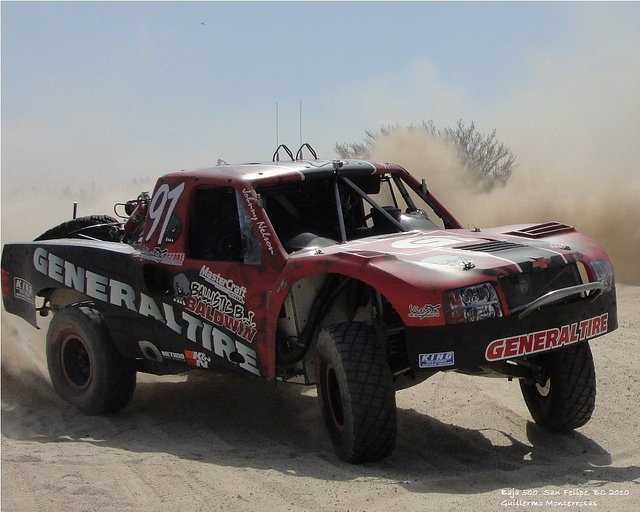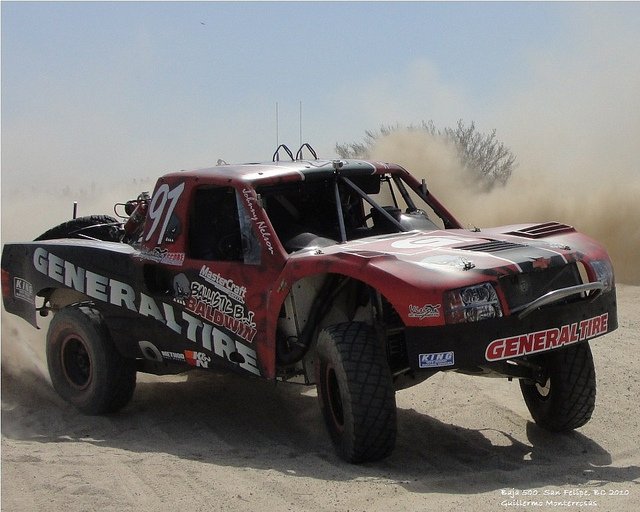
From our perch atop Coyote Cal’s hostel outside Erendira, we could see the dust cloud, swarmed with helicopters, as it grew closer and louder, making its way up the coast, with blue ocean on one side, and scrub desert on the other.
What we were observing was the main body of the Baja 500, but trophy trucks raced well ahead of the pack, and in their dash for the finish would speed right past the hostel, rattling our placid, Tecate appointed spectatorship with their eardrum piercing rpm buzz. One or two would blast along every 20 minutes or so, some on only two of their wheels. Still, the main body of the race grew closer.
That was way back in 2000. This year’s race wrapped up June 8.
The Baja 500 has turned the Mexican peninsula into a massive gringo party wonderland each June since 1969. The original race, the 1,000, grew out of a group of motorcyclists who would post a letter in La Paz to record their start and then post another in Tijuana to record their finish. This game grew into a large, sponsored sporting event, which in its earlier days had greats like Parneli Jones shot gunning his sponsor’s Olympia beers at pit stops.
Today’s Baja races attract thousands to the peninsula, where Federales work to control the crowds and the locals change the course signs and alter the routes just to make it a little more sporting.
The race has six main levels of entry: The pro levels include trophy truck and straight trucks, as well as VW bugs. Here there are three levels, with a fourth sportsman level for trucks as well. The motorcycle and ATV levels are divided into one pro and one sportsman level.
At the sportsman level, anyone with a vehicle that might make it is welcome to enter. Theirs, of course, will be a different race from the wealthy campaigners who compete at the pro level.
The annual event, whether pro, sportsman or spectator, is a loud, dusty party well worth the trip.
Photo credit: Flickr Creative Commons








